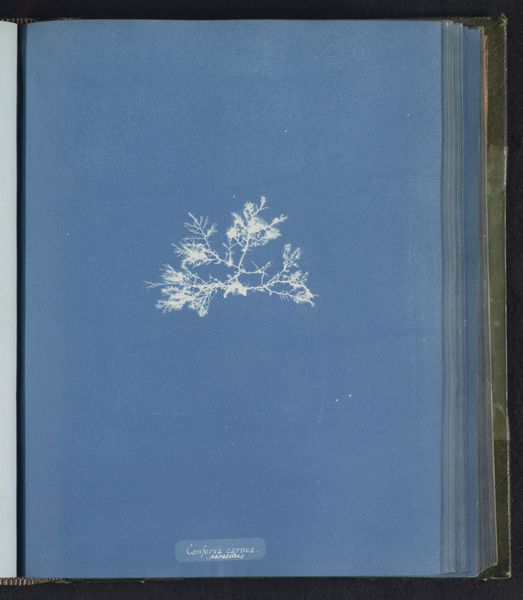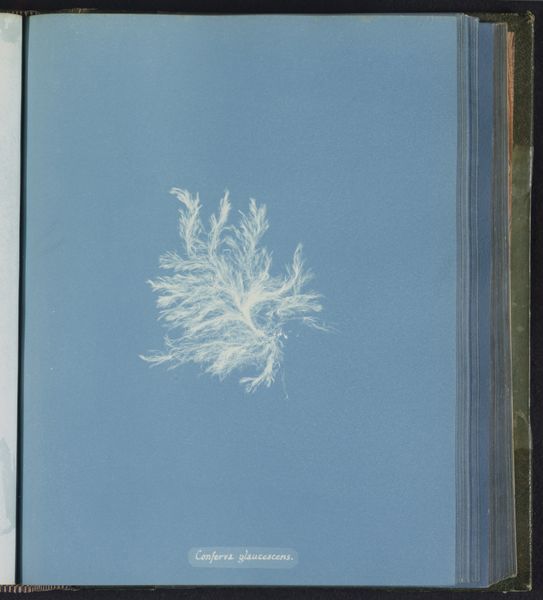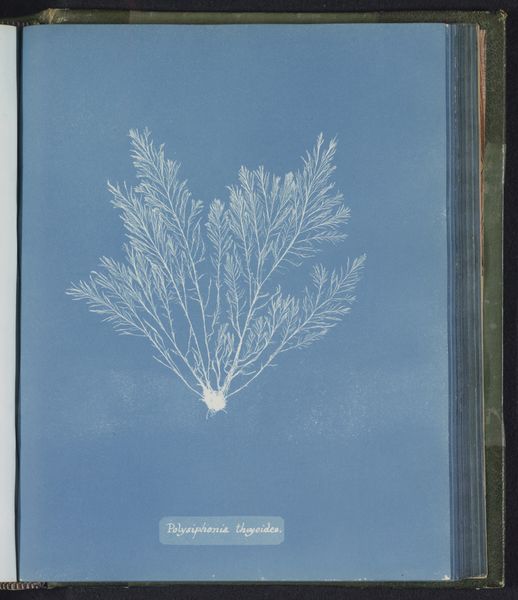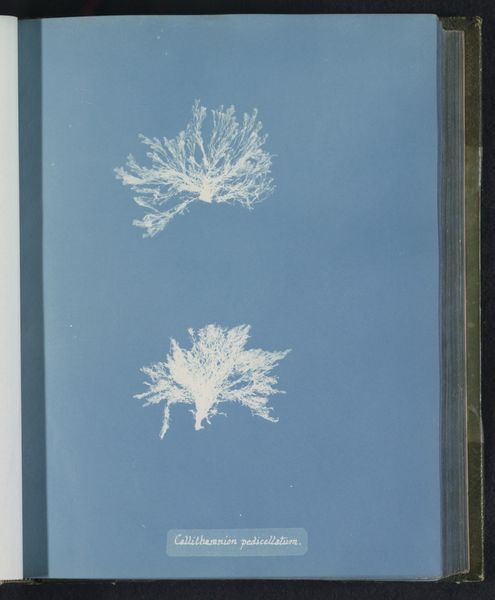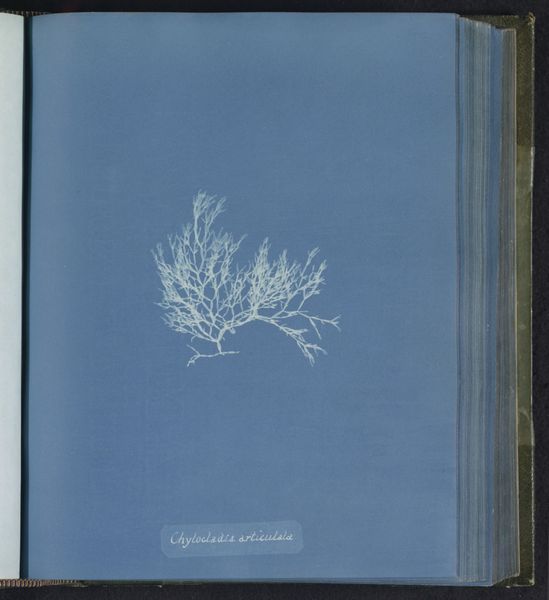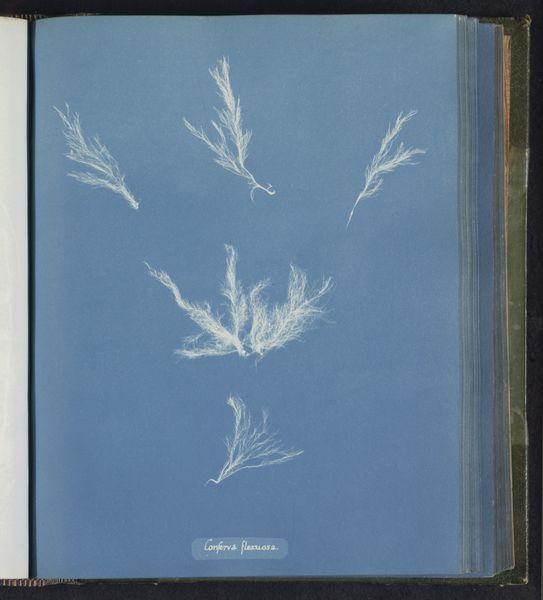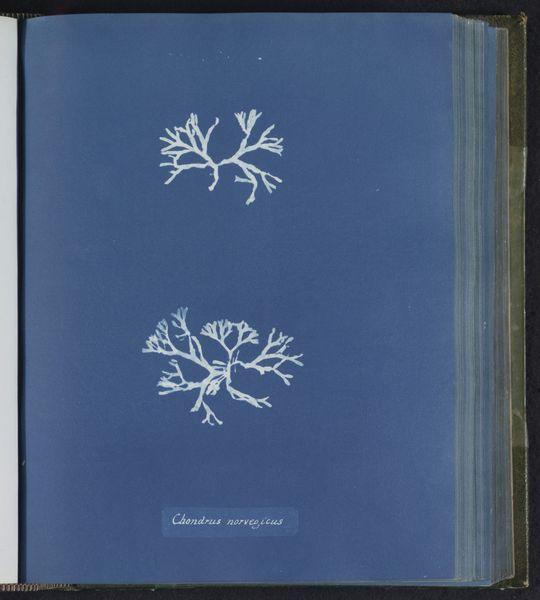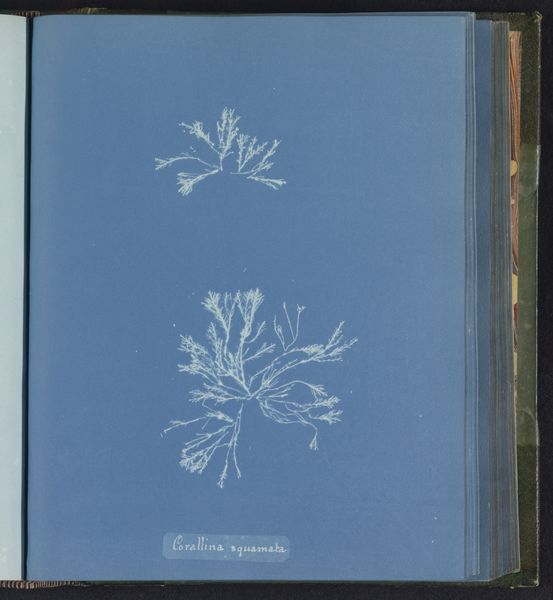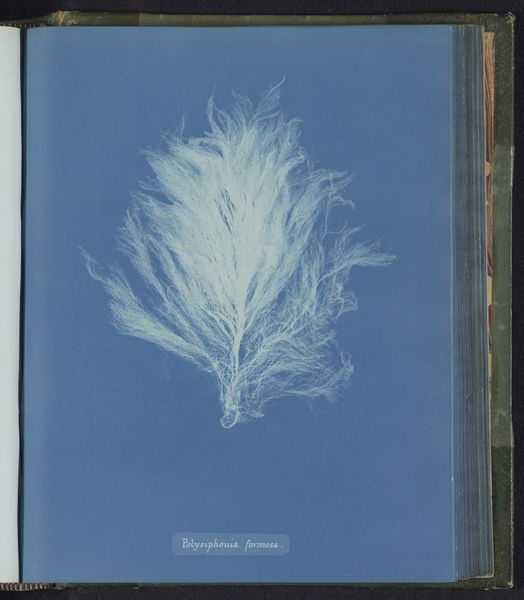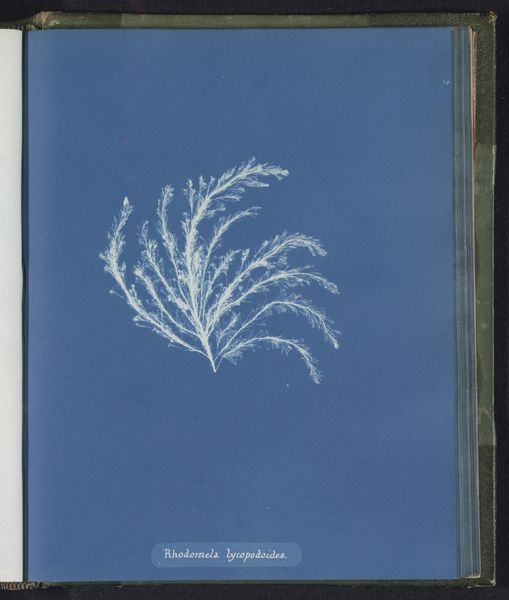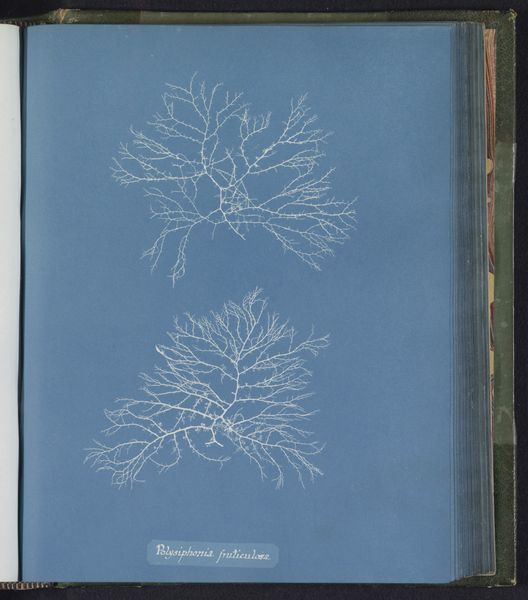
print, cyanotype, photography
#
water colours
# print
#
cyanotype
#
photography
#
watercolor
Dimensions: height 250 mm, width 200 mm
Copyright: Rijks Museum: Open Domain
Editor: Here we have Anna Atkin's "Polysiphonia affinis," a cyanotype print made sometime between 1843 and 1853. I'm immediately struck by the ghostly quality of the seaweed against the vibrant blue background. What can you tell me about its significance? Curator: Well, it’s more than just a pretty picture, isn't it? Consider the context: this is one of the earliest examples of photography being used for scientific documentation. Atkins was a botanist, and she used this new technology to create detailed illustrations of plant specimens. It challenges the role of art, doesn't it? Is this objective science or subjective representation? Editor: That's fascinating! It bridges art and science. Did the Victorian audience view it this way? Curator: Exactly. The Victorian era was obsessed with cataloging and classifying the natural world. Think of Darwin and the explosion of natural history studies. Atkins’s work fit into this movement, providing a visual reference library of botanical specimens. But remember that photography itself was new and seen as somewhat magical. Its ability to capture “truthfully” what the eye could see was powerful. What impact do you think this had? Editor: So, this cyanotype wasn't just about recording, it was about controlling and categorizing knowledge, but also perhaps celebrating scientific discovery? Curator: Precisely! And this image became accessible to a much broader audience due to this cyanotype production. Its significance extends beyond its aesthetic value. It signifies a shift in how we perceived and documented the world around us. Editor: This has completely changed my view of the piece. I now see it as both beautiful and revolutionary! Thanks for illuminating the history. Curator: My pleasure. Looking at it now, it gives us an appreciation for the intersection of science, art and the development of technologies within society.
Comments
No comments
Be the first to comment and join the conversation on the ultimate creative platform.
